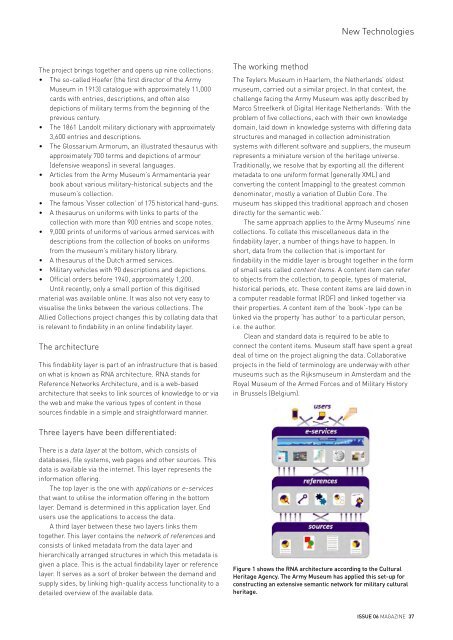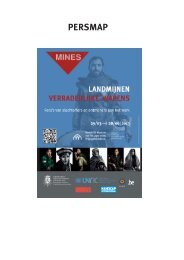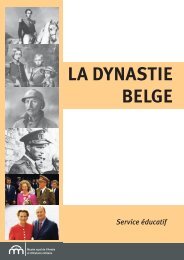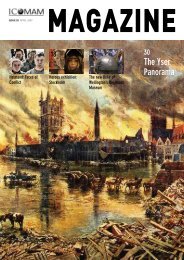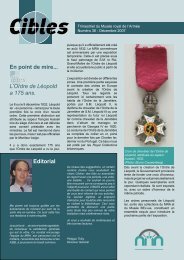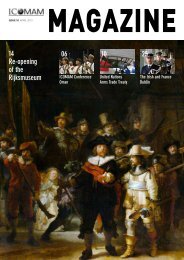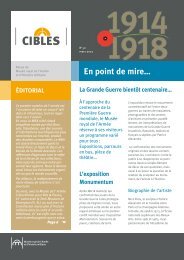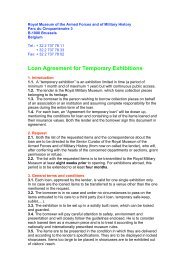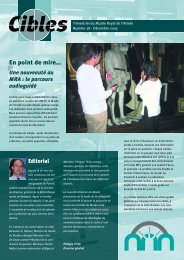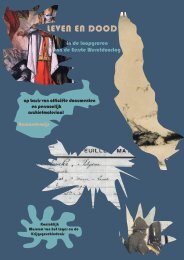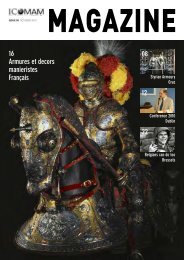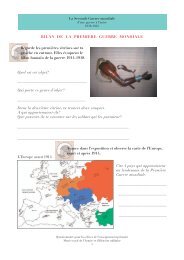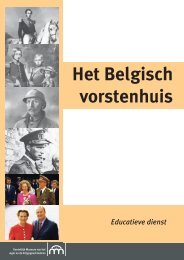(High resolution) April 2011 (PDF
(High resolution) April 2011 (PDF
(High resolution) April 2011 (PDF
You also want an ePaper? Increase the reach of your titles
YUMPU automatically turns print PDFs into web optimized ePapers that Google loves.
The project brings together and opens up nine collections:<br />
• The so-called Hoefer (the first director of the Army<br />
Museum in 1913) catalogue with approximately 11,000<br />
cards with entries, descriptions, and often also<br />
depictions of military terms from the beginning of the<br />
previous century.<br />
• The 1861 Landolt military dictionary with approximately<br />
3,600 entries and descriptions.<br />
• The Glossarium Armorum, an illustrated thesaurus with<br />
approximately 700 terms and depictions of armour<br />
(defensive weapons) in several languages.<br />
• Articles from the Army Museum’s Armamentaria year<br />
book about various military-historical subjects and the<br />
museum’s collection.<br />
• The famous ‘Visser collection’ of 175 historical hand-guns.<br />
• A thesaurus on uniforms with links to parts of the<br />
collection with more than 900 entries and scope notes.<br />
• 9,000 prints of uniforms of various armed services with<br />
descriptions from the collection of books on uniforms<br />
from the museum’s military history library.<br />
• A thesaurus of the Dutch armed services.<br />
• Military vehicles with 90 descriptions and depictions.<br />
• Official orders before 1940, approximately 1,200.<br />
Until recently, only a small portion of this digitised<br />
material was available online. It was also not very easy to<br />
visualise the links between the various collections. The<br />
Allied Collections project changes this by collating data that<br />
is relevant to findability in an online findability layer.<br />
The architecture<br />
This findability layer is part of an infrastructure that is based<br />
on what is known as RNA architecture. RNA stands for<br />
Reference Networks Architecture, and is a web-based<br />
architecture that seeks to link sources of knowledge to or via<br />
the web and make the various types of content in those<br />
sources findable in a simple and straightforward manner.<br />
Three layers have been differentiated:<br />
There is a data layer at the bottom, which consists of<br />
databases, file systems, web pages and other sources. This<br />
data is available via the internet. This layer represents the<br />
information offering.<br />
The top layer is the one with applications or e-services<br />
that want to utilise the information offering in the bottom<br />
layer. Demand is determined in this application layer. End<br />
users use the applications to access the data.<br />
A third layer between these two layers links them<br />
together. This layer contains the network of references and<br />
consists of linked metadata from the data layer and<br />
hierarchically arranged structures in which this metadata is<br />
given a place. This is the actual findability layer or reference<br />
layer. It serves as a sort of broker between the demand and<br />
supply sides, by linking high-quality access functionality to a<br />
detailed overview of the available data.<br />
The working method<br />
New Technologies<br />
The Teylers Museum in Haarlem, the Netherlands’ oldest<br />
museum, carried out a similar project. In that context, the<br />
challenge facing the Army Museum was aptly described by<br />
Marco Streefkerk of Digital Heritage Netherlands: ‘With the<br />
problem of five collections, each with their own knowledge<br />
domain, laid down in knowledge systems with differing data<br />
structures and managed in collection administration<br />
systems with different software and suppliers, the museum<br />
represents a miniature version of the heritage universe.<br />
Traditionally, we resolve that by exporting all the different<br />
metadata to one uniform format (generally XML) and<br />
converting the content (mapping) to the greatest common<br />
denominator, mostly a variation of Dublin Core. The<br />
museum has skipped this traditional approach and chosen<br />
directly for the semantic web.’<br />
The same approach applies to the Army Museums’ nine<br />
collections. To collate this miscellaneous data in the<br />
findability layer, a number of things have to happen. In<br />
short, data from the collection that is important for<br />
findability in the middle layer is brought together in the form<br />
of small sets called content items. A content item can refer<br />
to objects from the collection, to people, types of material,<br />
historical periods, etc. These content items are laid down in<br />
a computer readable format (RDF) and linked together via<br />
their properties. A content item of the ‘book’-type can be<br />
linked via the property ‘has author’ to a particular person,<br />
i.e. the author.<br />
Clean and standard data is required to be able to<br />
connect the content items. Museum staff have spent a great<br />
deal of time on the project aligning the data. Collaborative<br />
projects in the field of terminology are underway with other<br />
museums such as the Rijksmuseum in Amsterdam and the<br />
Royal Museum of the Armed Forces and of Military History<br />
in Brussels (Belgium).<br />
Figure 1 shows the RNA architecture according to the Cultural<br />
Heritage Agency. The Army Museum has applied this set-up for<br />
constructing an extensive semantic network for military cultural<br />
heritage.<br />
ISSUE 06 MAGAZINE 37


